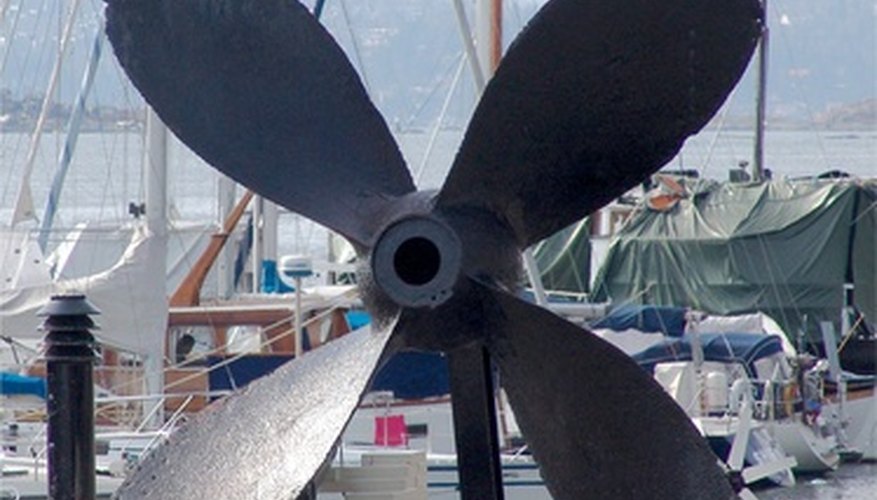Measuring the taper of a shaft involves calculating a ratio of diameter change with respect to distance. This calculation gives you the slope of the narrowing shaft. Tapered shafts are frequently used in equipment that, by their function, create positive force up the shaft. Boat propellers require tapered shafts, since the process of pushing against the water creates pressure into the shaft. Simple items such as shovels might also use tapered shafts.
- Measuring the taper of a shaft involves calculating a ratio of diameter change with respect to distance.
- Boat propellers require tapered shafts, since the process of pushing against the water creates pressure into the shaft.
Measure the diameter of the shaft at the beginning and end of the taper. A caliper makes measuring the diameter easy by simply clamping onto the shaft and giving the reading. This will usually be in millimetres, but any usit of measurement will work.
Measure the distance between the beginning and end of the taper using your tape measure. Make sure you use the same units as you did with the caliper.
Subtract the largest diameter measurement from the smallest. As an example, if you measured 20.3mm and 25.0mm, the difference would be 4.7mm.
Divide the distance measurement by the difference between the diameters. If you measured a distance between the beginning and end of the taper as 75mm, then you would divide 75mm by 4.7mm. This gives you a taper of 16.0.
- Measure the distance between the beginning and end of the taper using your tape measure.
- If you measured a distance between the beginning and end of the taper as 75mm, then you would divide 75mm by 4.7mm.
This figure is normally expressed as a ratio by adding "1:" in front of the calculation, although sometimes this part is assumed. In the example, the ratio would be 1-to-16. This means that the diameter increases by one unit for every 16 units of distance.
